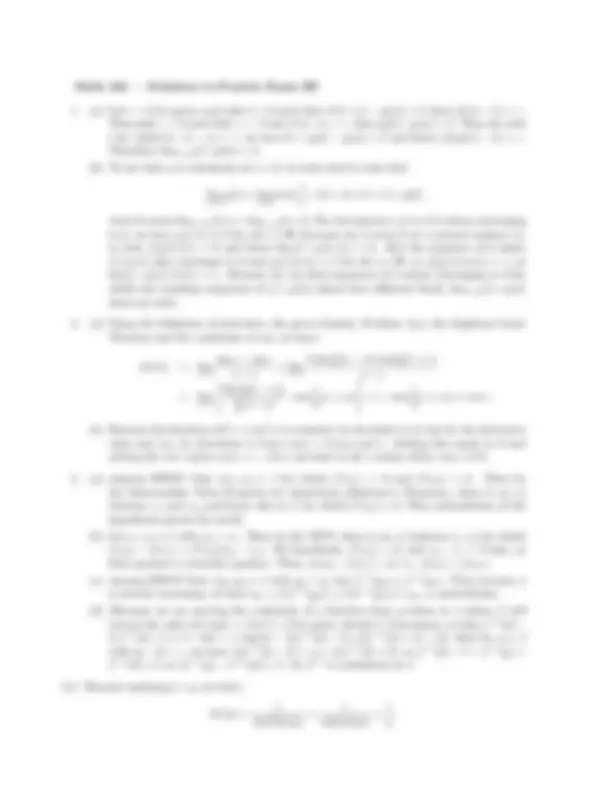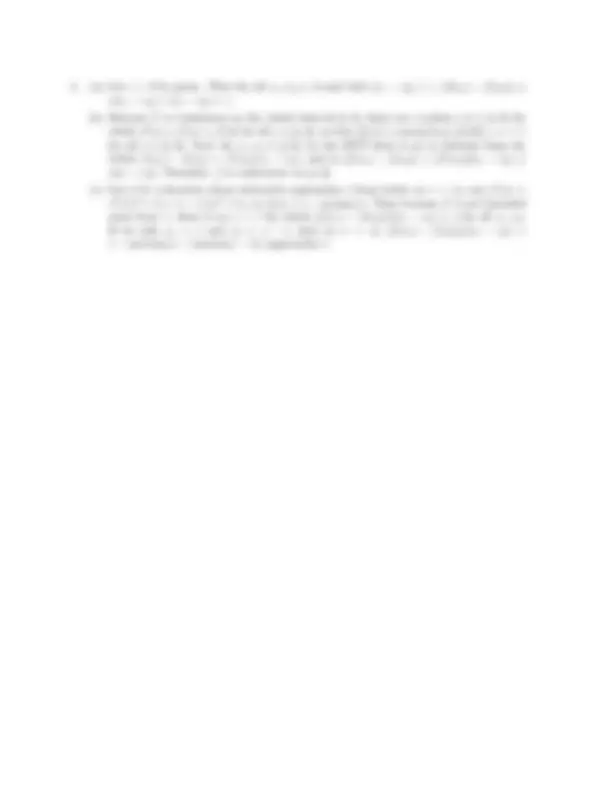




Study with the several resources on Docsity

Earn points by helping other students or get them with a premium plan


Prepare for your exams
Study with the several resources on Docsity

Earn points to download
Earn points by helping other students or get them with a premium plan
Community
Ask the community for help and clear up your study doubts
Discover the best universities in your country according to Docsity users
Free resources
Download our free guides on studying techniques, anxiety management strategies, and thesis advice from Docsity tutors
Solutions to practice exam iii of math 323, which covers limits and continuity of composite functions, derivatives of trigonometric functions, and contractive functions. Proofs for various theorems and examples to illustrate the concepts.
Typology: Exams
1 / 4

This page cannot be seen from the preview
Don't miss anything!



November 10, 2001 Math 323 — Practice Exam III
(a) Suppose that g is continuous at a t-value a; that there is an interval around a (say Vβ (a) where β > 0) for which, for all t in the interval except t = a, g(t) 6 = g(a); and that limx→g(a) f (x) = L. Prove that limt→a(f ◦ g)(t) = L. (b) (This part shows why one of the hypotheses in (a) is needed, and also why we must take some care in proving the Chain Rule.) Let
f (x) =
{ 0 if x 6 = 2 1 if x = 2 and^ g(t) =
{ t sin (^1) t + 2 if t 6 = 0 2 if t = 0.
Prove that limx→ 2 f (x) = 0 and g is continuous at t = 0, but that limt→ 0 (f ◦g)(t) doesn’t exist. (Hint: Consider two sequences of t-values converging to 0, (1/n) and (1/(nπ)).)
(a) Use the identity sin A − sin B = 2 sin( 12 (A − B)) cos( 12 (A + B)) to find the derivative of sin at the x-value c, from the limit definition of derivative. (In this process, of course, you are proving that sin is differentiable at c). (b) Assume that cos is also differentiable, and use the derivative rules and the identity sin^2 A + cos^2 A = 1 to find the derivative of cos.
(a) Prove that either f ′(x) > 0 for all x ∈ I or f ′(x) < 0 for all x ∈ I. (b) For the remaining parts of this problem, assume f ′(x) > 0 for all x ∈ I. Prove that f is strictly increasing on I. (c) By the Intermediate Value Theorem, f (I) is an interval J. Then by (b), f is a one-to-one onto function I → J. Thus, there is an inverse function f −^1 : J → I defined by, for y ∈ J, f −^1 (y) is the unique x ∈ I for which f (x) = y. Prove that f −^1 is also strictly increasing. (d) Prove thatf −^1 is continuous at each y-value d ∈ J. (So as not to make many cases, assume d is an interior point of J, so that f −^1 (d) is an interior point of I.)
Remark: In a way similar to but messier than (d), it is possible to prove that, for each d ∈ J, (f −^1 )′(d) exists and equals 1/f ′(f −^1 (d)).
3.5. (8 points) However we define the function exp(x) on R (which is really ex^ in a different notation, but we don’t want to assume other properties of that function), we should be able to verify from that definition that exp(0) = 1 and exp is (differentiable and) equal to its own derivative for all x ∈ R. Assume that the inverse function ln of exp is also differentiable, and use the fact that exp′(x) = exp(x) to find the derivative of ln(y) (with respect to y). (I have switched to the variable y because I think of the domain of exp as a subset of the x-axis and its range, the domain of ln, as a subset of the y-axis. Hint: What is exp(ln(y))?)
(a) Prove that a contractive function is uniformly continuous. (b) Prove that, if A is a compact interval [a, b], f ′(x) is continuous on [a, b] and − 1 < f ′(x) < 1 for all x ∈ [a, b], then f is contractive. (c) Give an example to show that, if the interval [a, b] is replaced by the interval [a, ∞) (still closed but no longer bounded) in (b), then the conclusion fails.